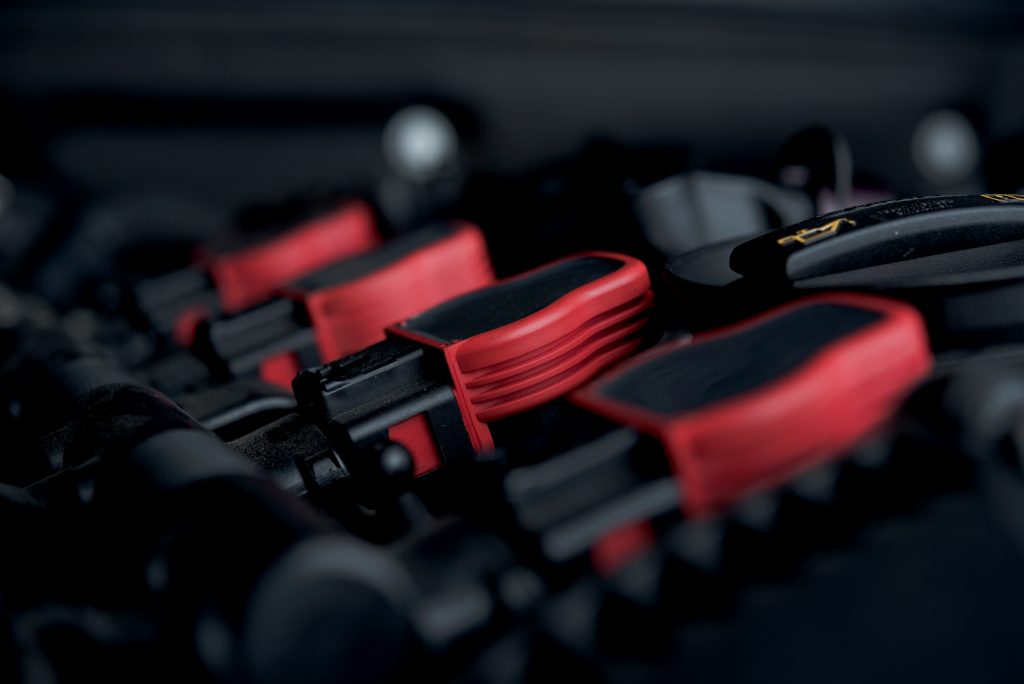The Audi B8 A4 is the S4’s less angry counterpart. If you want all the style but aren’t concerned with having the most powerful engine available for the chassis, the B8 A4 is an excellent choice. It has all the refinement you could want from an executive sedan and plenty of ‘get up and go’ but isn’t ostentatious in its approach to performance or execution. With it’s famed Quattro AWD, optional manual transmission, relative affordability, and potential for superb power, the B8 A4 is an attractive vehicle for anyone hoping to drive a contemporary luxury-performance European sedan daily, but there are a few issues common to the car that should be known so you can take preventative action and enjoy your A4 for years to come. This is how we suggest you prepare your A4 for reliability and solve those pesky problems with all the replacement A4 parts you’ll need to do it.

First and foremost, the Audi B8 A4 is not a car you should shy away from just because it has a few known quirks. All cars experience recalls, technical service bulletins, and have slight imperfections. They’re complicated machines mass-produced with parts from many different suppliers. It’s no surprise when we find that one has some room for improvement. The B8 A4 is most commonly plagued by oil consumption, misfires, occasional speed wobble, bad High-Pressure Fuel Pumps, and faulty water pumps. Have no fear, though. We can tell you what you need to know to ensure your B8 A4 stays reliable.
Oil Consumption:
The B8 A4 suffers from oil consumption, which can reduce your gas mileage and cause you to top off your oil regularly. Not only that but burning oil means it isn’t receiving proper lubrication. What causes this? You may have read our in-depth explanation of oil catch can systems and how they combat oil consumption, which we highly suggest you do if you haven’t, but the gist is that pressure venting from the crankcase back into the intake system includes a lot of oil particles. This is fairly normal. With a catch can, like our ECS Baffled Catch Can System, you can stop a lot of those particles and catch them in the reservoir, which means you won’t introduce them back into the system. As for solving the consumption itself entirely, the best way to stay on top of it is to perform your A4’s oil service with premium oil every 4-5,000 miles. We suggest LIQUI MOLY Leichtlauf.

To further combat the consumption, before you change your oil the next time you do, run LIQUI MOLY Pro-Line Engine Flush through the system. This will clean up any deposits in your engine that may contribute to poor performance, lower fuel mileage, and higher oil consumption. Then, when you pour in fresh oil, include CERATEC to further protect your engine and prevent any lubrication issues. You can choose from our Assembled by ECS Oil Service Kits or build your own for a full service that will help you prevent future consumption issues.
Misfires:
We spoke about misfires in our recent MK6 GTI article so it would make sense that this article would include them as well since it is the same engine in both cars. Misfires are caused by fouled spark plugs or bad coil packs. The easy solution, if you have a misfire, is to swap the coil experiencing a misfire to another cylinder. If the misfire follows the coil, you know that is your culprit. If it doesn’t, do the same with the spark plug to confirm your plugs are bad. We suggest our B8 A4 Ignition Service Kits to tackle this job.

Simply replacing your coil packs and spark plugs (which should be done every 60,000 miles anyway) will likely solve the misfire issue. However, if there is excessive carbon buildup in your engine, that may be the culprit. We suggest performing the LIQUI MOLY Engine Flush and CERATEC treatment to fix that issue. See the previous oil section.
Water Pump:
Another basic maintenance item, the B8 A4’s water pump is subject to premature failure. You can spot a failing water pump by observing rust or coolant residue around the water pump housing, which indicates a leak from the gasket or pump itself. The final sign is overheating, which we want to prevent. This is a simple fix, but we suggest going above and beyond. A full cooling system refresh should happen roughly every 65,000 miles anyway, so if you are concerned about your water pump, the best thing to do is a full service. Our Assembled by ECS Cooling System Refresh kits include fresh coolant, a new water pump, new thermostat, and more for you to bring your cooling system back up to snuff.
Steering Wobble:
This one is fairly easy, too. The power steering system can leak on the B8 A4, which causes some weird vibrations at low and high speeds, sometimes resulting in ‘death wobble.’ It’s easy enough to fix. Find the source of the leak, usually the power steering hose, and replace it. However, if you want peace of mind, replacing the pump and system itself is a sure bet to be rid of the power steering woes in your Audi.
High-Pressure Fuel Pump:
The HPFP is a known headache in the B8 A4. A failure here can leave your car starving for fuel and unable to run. This is costly to repair at the dealership but can be done at home, just like the rest of these services. A new HPFP is the only solution here, which we have available for you to purchase. It is also suggested you replace your cam follower every 30,000 miles as well. Use the Schwaben Professional VAG Scan Tool to diagnose this failure through the engine codes.
Wrapping Up:
These are the most common and most annoying of the B8 A4’s issues, which goes to show, the car is fairly solid all around. All things considered, these are not the most egregious problems that plague popular cars and are all remedied easily, especially with help from your friends at ECS Tuning when it comes to finding your Audi parts. If you are interested in picking an Audi B8 A4 up for yourself, there are plenty of articles we have that detail performance upgrades and offering inspiration we highly recommend you check out as well.

Related Articles:
ECS Street Performance Coilovers for the B8 A4/S4
Audi 2.0T Charge Pipe and Intercooler Installation DIY






